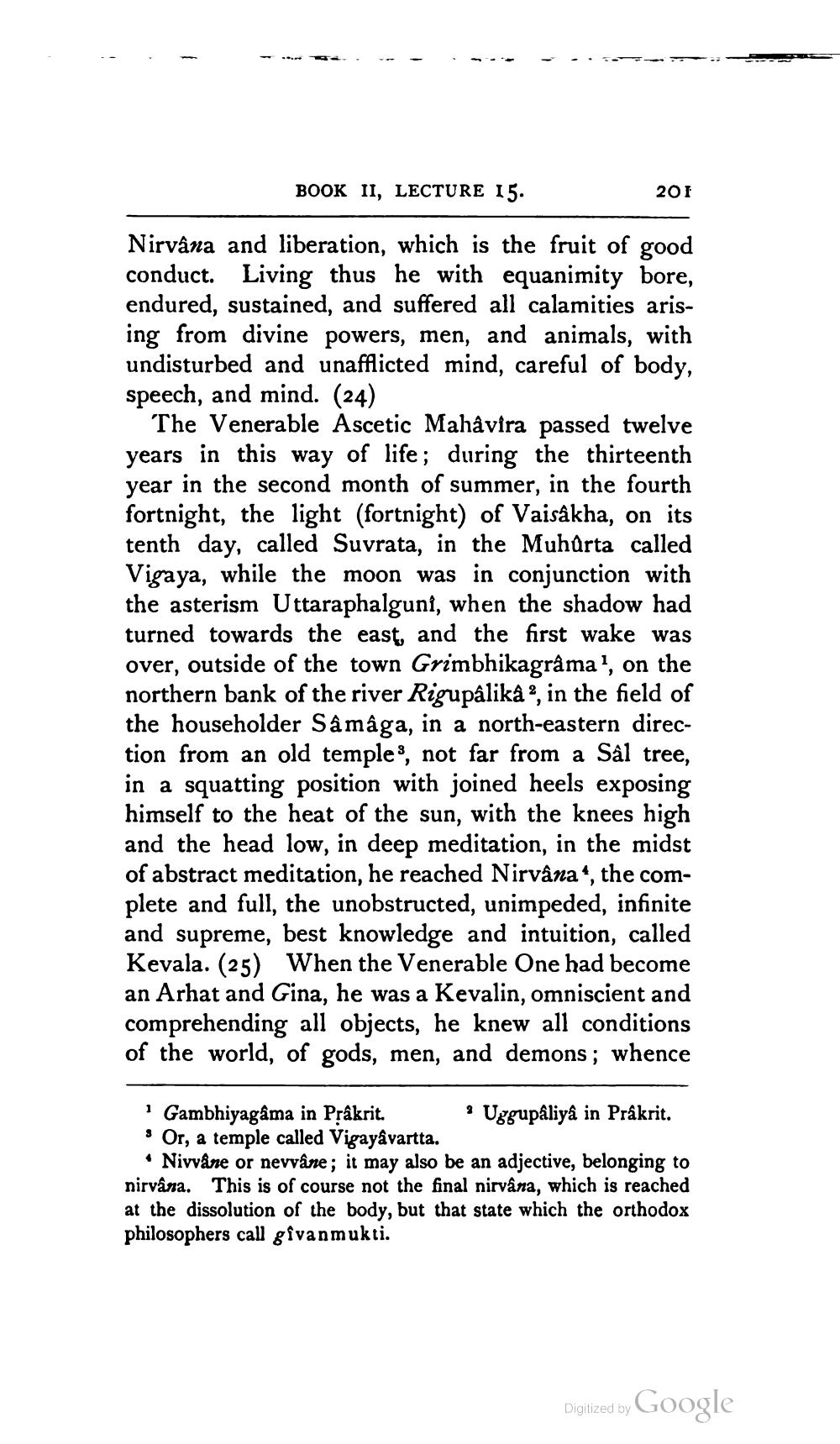________________
BOOK II, LECTURE 15.
201
Nirvana and liberation, which is the fruit of good conduct. Living thus he with equanimity bore, endured, sustained, and suffered all calamities arising from divine powers, men, and animals, with undisturbed and unafflicted mind, careful of body, speech, and mind. (24)
The Venerable Ascetic Mahavira passed twelve years in this way of life; during the thirteenth year in the second month of summer, in the fourth fortnight, the light (fortnight) of Vaisakha, on its tenth day, called Suvrata, in the Muhurta called Vigaya, while the moon was in conjunction with the asterism Uttaraphalgunî, when the shadow had turned towards the east, and the first wake was over, outside of the town Grimbhikagrâma', on the northern bank of the river Rigupâlika ?, in the field of the householder Sâmâga, in a north-eastern direction from an old temple, not far from a Sal tree, in a squatting position with joined heels exposing himself to the heat of the sun, with the knees high and the head low, in deep meditation, in the midst of abstract meditation, he reached Nirvana", the complete and full, the unobstructed, unimpeded, infinite and supreme, best knowledge and intuition, called Kevala. (25) When the Venerable One had become an Arhat and Gina, he was a Kevalin, omniscient and comprehending all objects, he knew all conditions of the world, of gods, men, and demons; whence
Gambhiyagama in Prakrit.
Uggupâliya in Prakrit. • Or, a temple called Vigayâvartta.
• Nivvåne or nevvâne; it may also be an adjective, belonging to nirvana. This is of course not the final nirvana, which is reached at the dissolution of the body, but that state which the orthodox philosophers call givanmukti.
Digitized by Google




